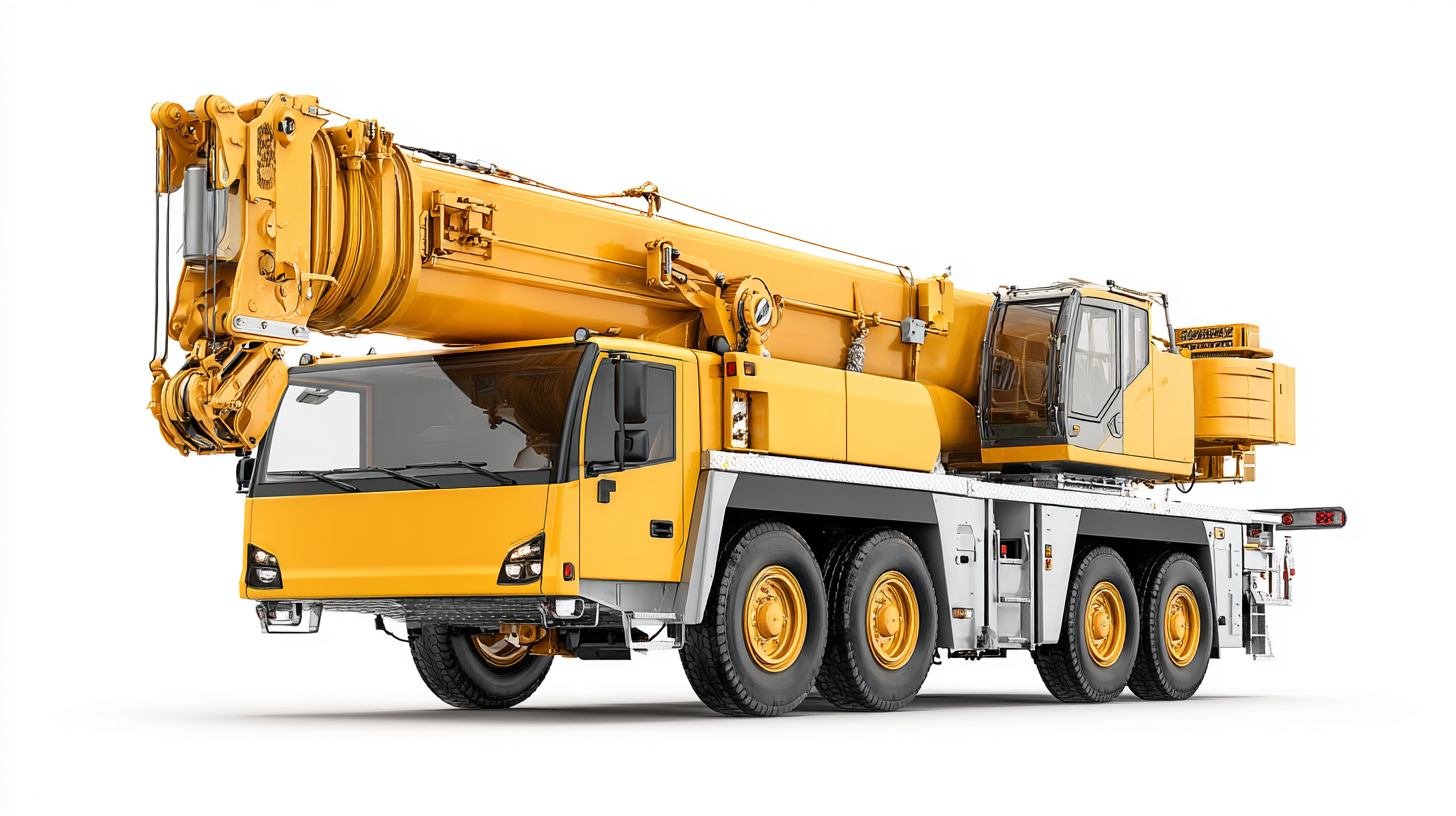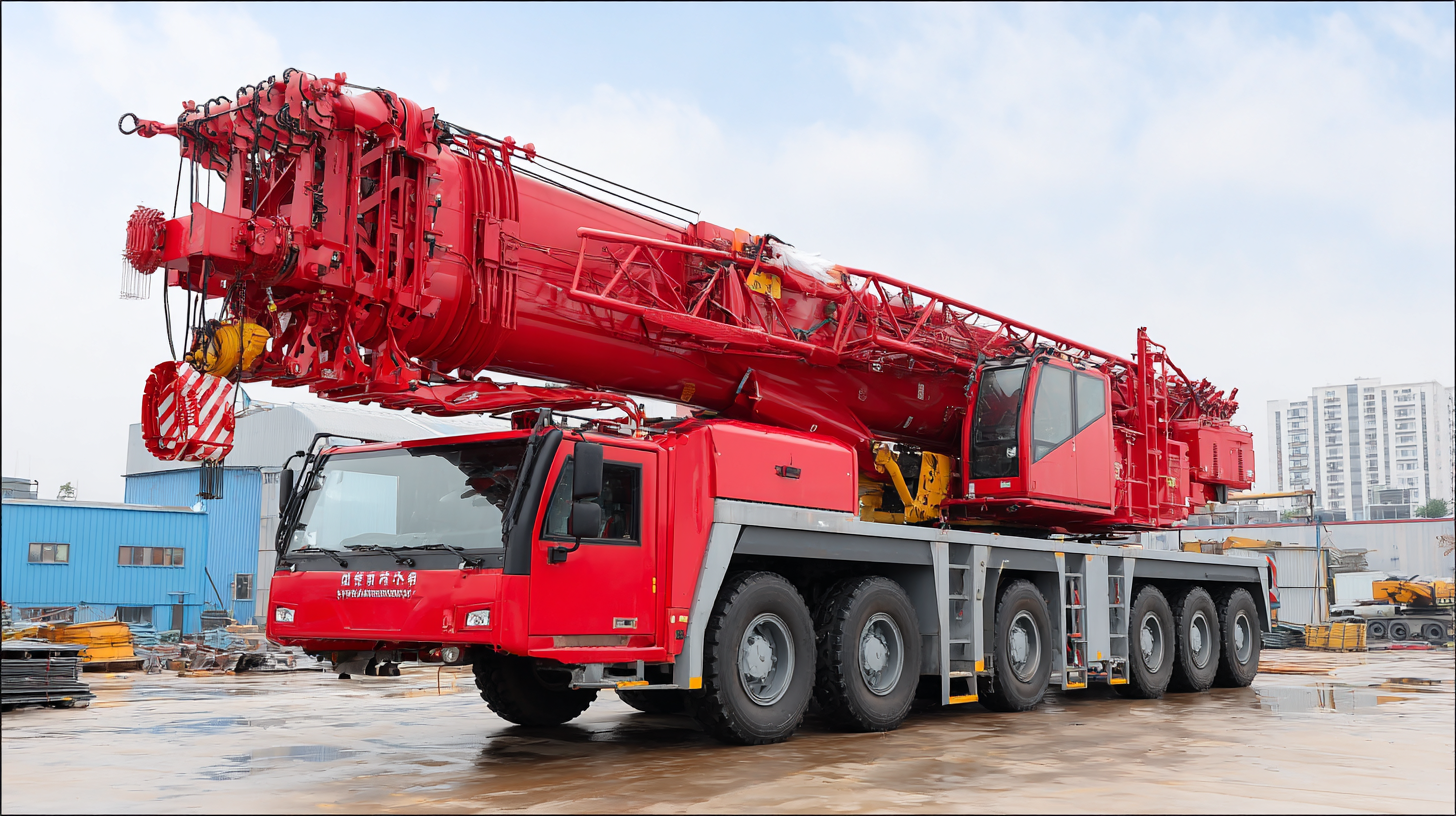Leave Your Message
-
Phone
-
E-mail
-
WhatsApp
In the rapidly evolving construction industry, the selection of the right equipment is crucial for enhancing productivity and safety on job sites. One of the most indispensable tools for heavy lifting in modern construction is the Slewing Crane. According to a report by Research and Markets, the global slewing crane market is projected to grow at a CAGR of 5.1% from 2022 to 2027, driven by increasing demands for efficient material handling solutions. With major manufacturers in Asia-Pacific leading the charge, their innovations aim to improve operational efficiency and reduce downtime. As construction projects become more complex and advanced, understanding how to choose the best slewing crane tailored to specific needs can significantly impact project success and cost-effectiveness. This blog will explore the essential factors to consider when selecting a slewing crane, ensuring that your construction undertakings are met with the highest standards of quality and performance.

When selecting a slewing crane for construction, several key factors must be considered to ensure optimal efficiency and safety on the job site. Firstly, the type of crane needed should match the specific demands of the project, whether it be a hammerhead, flat top, luffing jib, or self-erecting crane. Each type has unique advantages that cater to different lifting heights, load capacities, and operational controls. Assessing the nature of the construction tasks and site constraints will help in making the right choice.
Another important aspect is the automation capabilities of the crane. Over the past two decades, significant advancements in crane automation have enhanced precision and reduced the risk of human error. Investing in modern cranes with automated features can improve operational efficiency and safety. It’s essential to evaluate the user interface as well; embedded visualizations in crane operation controls can provide real-time assistance to operators, ensuring they can respond quickly to dynamic site conditions.
Tip 1: Always perform a thorough site assessment before choosing a crane model. Consider factors like load dimensions and site limitations to determine which crane type maximizes productivity.
Tip 2: Prioritize cranes with advanced safety features and automation. These can significantly reduce operational risks and enhance overall safety for workers on site.

When selecting the best slewing crane for your construction needs, understanding the various types available in the market is crucial. Slewing cranes, such as hammerhead cranes, flat top cranes, luffing jib cranes, and self-erecting cranes, each have unique characteristics suited for different applications. According to recent industry analysis, the global market for tower cranes is projected to grow significantly, with a compound annual growth rate (CAGR) of approximately 7% from 2023 to 2030. This growth is attributed to the increasing demand for high-rise construction and infrastructure development.

Hammerhead cranes are ideal for large-scale projects due to their robustness and ability to handle heavy loads. Meanwhile, flat top cranes offer versatility, making them popular on sites with multiple levels. Luffing jib cranes excel in tight spaces, providing flexibility for urban construction, while self-erecting cranes allow for quick setup and are suited for smaller projects. Each crane type caters to specific requirements, highlighting the importance of evaluating the construction site and project scale when making a selection. With the right information, contractors can maximize both efficiency and safety on their job sites.
As the construction industry evolves, selecting the right slewing crane has become increasingly critical. The global cranes market is projected to grow from USD 40.54 million in 2025 to USD 58.99 million by 2033, with a CAGR of 4.8%. This significant growth is influenced by various industry trends, particularly the rising demand for automation in tower cranes. Over the past two decades, the automation available for tower cranes has dramatically improved, reshaping how construction projects are managed and executed.
Additionally, the market dynamics are shifting with the emergence of various crane types, including hammerhead cranes, flat top cranes, luffing jib cranes, and self-erecting cranes. Each type serves unique needs and operational efficiencies that construction companies must consider when making their selection. The understanding of these options, coupled with insight into future research directions on automation, can provide organizations with a strategic advantage in project planning and execution, ensuring they meet both current and future construction demands effectively.
When selecting the best slewing crane for your construction projects, two critical specifications to consider are weight capacity and reach. According to a recent report by the International Crane Survey, the average construction project requires a crane with a lifting capacity ranging from 10 to 50 tons, with larger projects often necessitating cranes that can lift up to 100 tons or more. This data underscores the importance of aligning your crane choice with the specific weight demands of your job site, ensuring both efficiency and safety in operations.
Reach capabilities also play a vital role in your decision-making process. A study by the Global Lifting Equipment Market revealed that the optimal reach for standard projects typically ranges from 30 to 75 feet, with specialized cranes designed for extensive outreach extending up to 100 feet or beyond for unique applications. It is essential to evaluate the layout of your construction site and determine the required reach to enable seamless lifting and placement of materials. By focusing on these essential specifications, you can confidently select a slewing crane that will enhance productivity and meet the unique demands of your construction needs.
| Crane Type | Weight Capacity (tons) | Max Reach (meters) | Height (meters) | Suitable for |
|---|---|---|---|---|
| Mobile Slewing Crane | 30 | 25 | 35 | Construction Sites |
| Tower Crane | 50 | 40 | 70 | High-Rise Buildings |
| Crawler Crane | 75 | 30 | 40 | Industrial Projects |
| Telescopic Boom Crane | 20 | 20 | 30 | Warehouse Projects |
When selecting the best slewing crane for your construction needs, understanding the cost versus benefits of various features is crucial. The global tower crane market is projected to grow significantly, with a valuation expected to reach $XX billion by 2026, influenced by a shift towards advanced construction methodologies. Analyzing the specific types of cranes—such as hammerhead, flat top, luffing jib, and self-erecting— can help in determining which models offer the best features for the investment.
For instance, hammerhead cranes are ideal for high-rise construction due to their impressive lifting capacities and reach, whereas flat top cranes provide better flexibility in urban environments with limited space. A recent industry report revealed that while luffing jib cranes tend to have a higher initial cost, their ability to operate efficiently in tight spaces can lead to substantial savings on long-term project expenses. Conversely, self-erecting cranes, which require minimal ground space for setup, are perfect for smaller projects where cost efficiency is paramount. Understanding these trade-offs can lead to more informed decisions that align with both budget constraints and operational needs.
